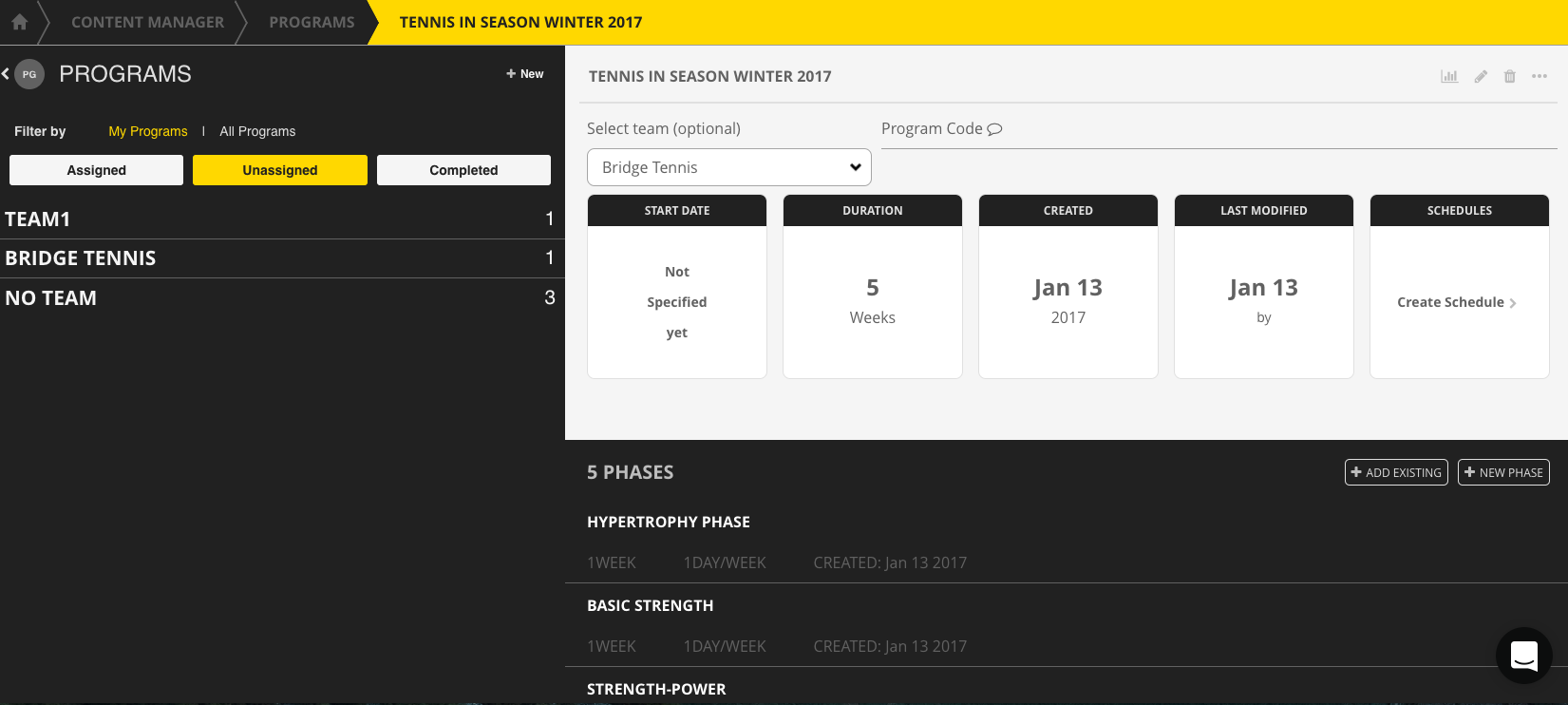
When putting together a strength and conditioning program for your athletes, there are a number of factors to take into consideration:
- The number of athletes training at once
- The training age & experience of your athletes
- What space/equipment you have available for each session
- How long each training session will be
- The number of weekly training sessions
- Any injuries individual athletes may have
- Practice and competition schedule
The best advice is to start simple. Lifting weights involves repetitive movement and learning sound movement patterns is key. Start with just a few movements that you deem are the most important for you and your athletes. The less exercises you start with, the more time you have to teach the proper technique. Do not rush this! Remember that, depending on your situation, you will hopefully be training these athletes for a few years. If you teach it right the first time, then you won’t have to teach it again later on.
Once you know what is important for you programmatically, then it’s time to put your strength and conditioning plan together. Always think long-term and remember where it is you are trying to take your athletes. Always think about what movements you are working towards and which competition(s) the athletes are gearing up for. A very simple and effective model to follow, especially if your athletes are novice/beginners (which most are even through the early college years), goes as follows:
Phase 1: Hypertrophy Phase / General Preparation (high volume, low intensity)
Phase 2: Basic Strength (moderate volume, high intensity)
Phase 3: Strength-Power (low volume, very high intensity)
Phase 4: Peaking / Maintenance
Phase 5: Active Rest (very low volume, very low intensity)

(Phase 1) The first phase in an off-season plan is the Hypertrophy / General Preparation phase. Work in this phase is very general in nature and geared towards reconditioning the body, increasing lean body mass, and increasing short-term endurance. Reps in this phase are generally higher, in the 8-15 range, for 2-4 sets, with the weight being lighter. The aim in this phase is to teach (or re-teach) different movements, especially those which will be the foundation of your lifting program (Squat, Front Squat, Deadlift, Bench Press, etc.), as well as to make sure the athletes recover from the wear and tear of the season and any injuries they may have experienced. This first phase can last as little as 2 weeks or as long as six weeks. As a general rule, most phases will last 3-4 weeks. This is an important phase as it prepares athletes for strength work to come in the later phases of training. It may not be the most exciting phase for your athletes, but it is absolutely necessary to get their bodies ready for the heavier, more intense phases to come.
(Phase 2) The next phase is our Basic Strength phase. The goal here is to increase specific strength for the athletes as the foundation for future power / high intensity work. The reps and sets for this phase are generally in 3-5 sets of 5 reps.
(Phase 3) The third phase in our periodized training plan is the Strength-Power phase. In this phase, the athlete trains using 3-5 sets of 2-3 reps in the main lifts of their program. In this phase, generally due to the increased strength the athlete has experienced but also the decreased fatigue because of the lower volume, the athlete can display greater power.
(Phase 4) The last phase is our Peaking phase. This is used to taper the athletes in the last few weeks before a major competition. Here, the athlete will usually train using 1-3 sets of 1-3 reps, with high intensity. The key here is to not wear out the athletes and allow them to regain full stamina before they compete.
(Phase 5) Once the season ends, the athlete should take 1-2 weeks off to rest. After an initial week of complete rest, the athlete can begin some very light training with very low volume of work and very low intensities. The goal here is complete recovery from the season.
Please remember the above are general recommendations and every situation is different. Design elite strength and conditioning programs that match your players' lifting experience and ability to maximize performance.
Building an effective strength and conditioning program is key to success. To learn more check out these articles on programming and measuring success.

-----
Author: Juan Pablo Reggiardo | BridgeAthletic Performance Specialist
Juan Pablo joined Bridge in 2016 and is in charge of developing all content and educational material for Bridge’s volleyball offerings. He has over 17 years of training experience, from middle school and high school athletes, to collegiate, professional, and Olympic hopefuls. Prior to joining Bridge, Juan Pablo was a collegiate sports performance coach for 12 years. He’s worked at both Stanford University and Louisiana State University with both school’s Men’s Basketball, Women’s Volleyball, and Golf programs. While with the women’s volleyball program, he was part of four national championship runs, including a championship title. Juan Pablo also works at a non-profit center for adolescents, The Riekes Center for Human Enhancement in Menlo Park, CA, where he directs their outreach programs and speed development programs.
His certifications include NSCA-CSCS, NASM-PES & CES, TPI Golf Fitness Pro, USAW Club Coach, USA T&F Level 1 Coach, FMS Level 1 Certified.
.png?width=150&height=50&name=BRIDGEBLOG(1).png)







